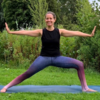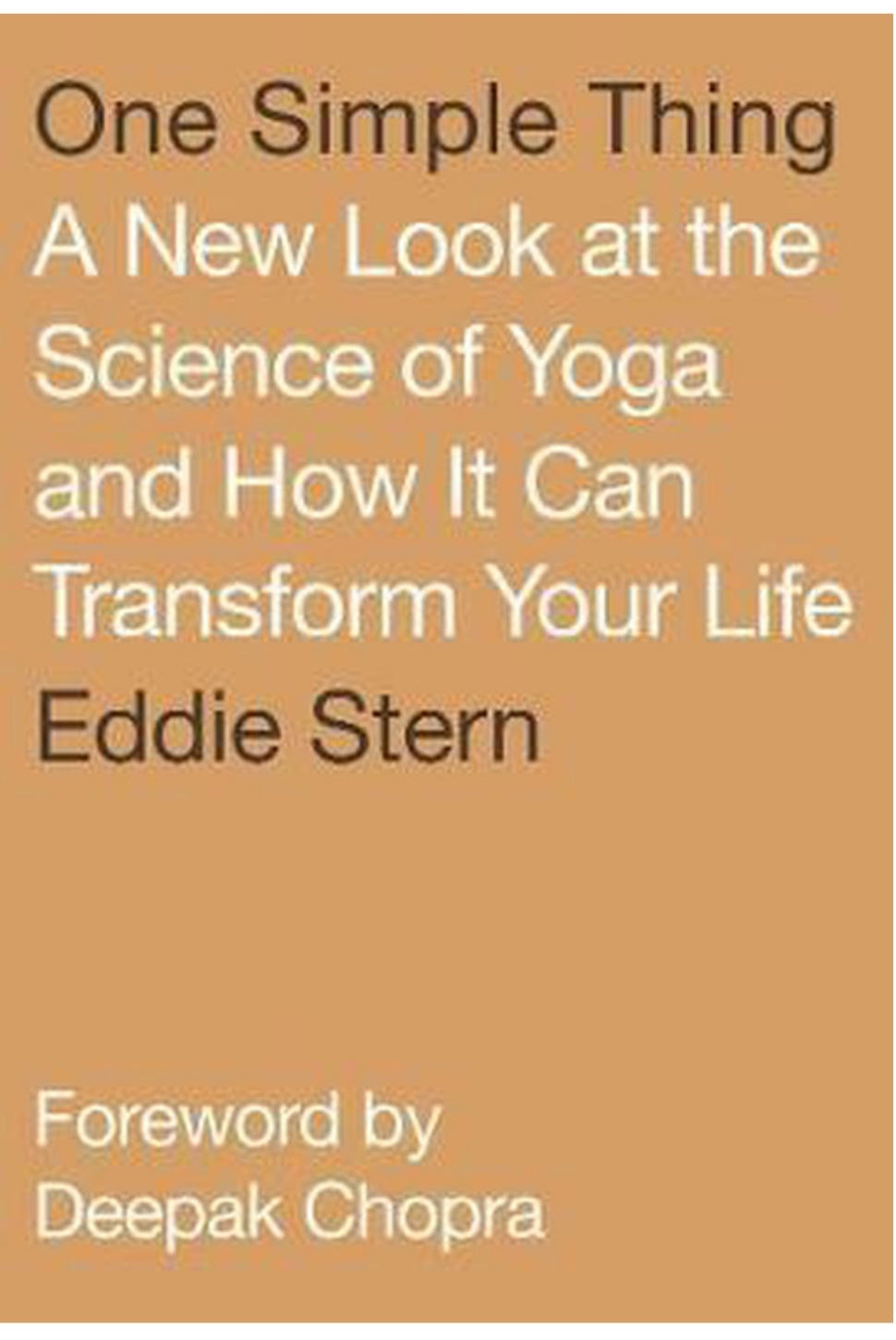Simple & effective
Are you interested in pranayama or breathing exercises, but not sure how to start? Or do you know how to practice them, but is practicing them regularly challenging for you? Perhaps “The Breathing App” will help you (free download for Android & iOS).
A calm breath provides mental calm, balance and inner peace. And it also has a positive effect on your general health and immune system. In this blog I will tell you more about the simple & effective resonance breathing. And the free app that helps you practice this breathing technique. Even if it is just for a few minutes somewhere in your day or just before going to sleep. Those few minutes already have a clear positive effect.
Focus on the quality of the breath
Do you practice pranayama or breathing exercises besides yoga postures? Personally, I have to admit that it took quite a while before I actually started practicing pranayama on a daily basis (in addition to the few breathing exercises that were already included in yoga classes).
Why didn't I prioritize it? I guess I didn't really realize how much that pranayama actually had to offer me. Those seemingly simple breathing techniques…. it was as if I was waiting for someone to teach me a bit more complicated stuff.
This changed with the help of my teacher Andrei Ram. He let me focus on the quality of my breathing rather than the quantity. By experiencing the benefits of this approach, I was hooked to pranayama (and prana nidra). Since that moment it feels so natural to practice them daily and it triggered my curiosity for the simple pranayama and breathing exercises as well.
Bringing your attention to the quality might sound so logical from the lense of yoga. But how tempting is it to focus on for example lengthening the pause between the inhalation and exhalation so much that you force it, instead of focusing on the effect on your life energy? A challenge for many yogis when they start to practice pranayama...
The effect? That practicing pranayama has such an enormous effect on my energy level, mood and clarity that I prioritize my pranayama practice nowadays.
Simple can also be very effective
Also, an exercise doesn’t have to be difficult to be effective. One of the advantages for “simple” breathing exercises is that it might allow you to turn inward more. To observe what you feel in your body (physically, emotionally and energetically), your intention or maybe even your connection with "the divine".
In this blog post I will tell you more about resonance breathing. A simple technique where you equalize the length of your inhalation and exhalation and can be practiced by everyone. Various studies have shown that resonance breathing has many positive effects on our health. Both physically and mentally.
Benefits resonance breathing
Many scientific studies (source) have shown that practicing resonance breathing shows a wide range of benefits, including:
- Increases pulmonary function
- Lowers blood pressure
- Has positive applications for anxiety and depression
- Improves baroreflex gain: homeostatic ability of the body to keep blood pressure at an almost constant level (instead of creating large fluctuations)
- Improves heart rate variability, whereby your heart rate recovers quickly after rising
- Tones the vagus nerve: the longest nerve in our body and has a major effect on our health and well-being
- Increases resiliency
- Increases the ability to handle stress
- Leads towards emotional balance
- Clinical improvements in asthma
That resonance breathing has so much effect is because it affects our nervous system. This happens by balancing the sympathetic and parasympathetic nervous system.
The sympathetic and the parasympathetic nervous system are both very important for our health. It takes care of all kinds of tasks that take place "automatically", without us having to mentally interfere. Very important. Imagine you would have to pay attention to let your heart beat all the time, day and night. Fortunately, our autonomic nervous system takes care of this.
The sympathetic nervous system has to do with activating us: our accelerator that speeds us up. The parasympathetic nervous system slows us down, like a braking system. We need both. Like ‘yin & yang’ or ‘asana & savasana’ work together.
Of course, we already use both of these branches of our nervous system. But in a lifestyle in which we process a lot of information, have long to-do lists, spend a lot of time on computers and telephones and/or worry a lot, there is often no longer a good balance between our sympathetic and parasympathetic nervous system. If you experience a lot of stress or have a typical Western lifestyle, resonance breathing can help balance your nervous system. Eddie Stern even describes resonance breathing as a reset button for your nervous system.
And fortunately resonance breathing is simple to practice. Namely by counting your breath and inhale just as long as your exhale.
How to practice resonance breathing
With resonance breathing, the duration of your inhalation and exhalation is the same (or the exhalation is slightly longer than the inhalation). For example, breathe in for six counts and out for six counts. Or if that is much longer than you are used to, you can for example start with four counts in and four counts out.
For some people, it feels more natural at first to allow the exhalation to be slightly longer than the inhale. In that case you can, for example, start with breathing 4 counts in and 6 counts out. After you have gotten used to it, you can try again to equalize the length of your inhalation and exhalation.
Since many people breathe 12 to 18 times a minute (and some even much more), there is a good chance that this will slow your breathing down. Slowing your breathing to about 5 cycles per minute is a breathing cycle that Tibetan monks and yogis naturally enter into while meditating.
A calm resonance breath can also help you get more energy, a better mood, a better night's sleep and experience less stress. Even people who have been practicing yoga asana for a long time have reported experiencing many positive effects after starting to practice resonance breathing.
Choose one of the following ratios:
- Inhale 4 counts, exhale 4 counts (7.5 breaths per minute)
- Inhale 4 counts, exhale 6 counts (6 breaths per minute)
- Inhale 5 counts, exhale 5 counts (6 breaths per minute)
- Inhale 5 counts, exhale 7 counts (5 breaths per minute)
- Inhale 6 counts, exhale 6 counts (5 breaths per minute): real resonance
The first time you choose a ratio, you could first count the length of your inhalation and exhalation a for you normal breath to get an indication what kind of ratio would be appropriate to start with. Then you first choose a ratio that is closest to this. Hereby you give yourself some time to get used to this breathing technique without forcing your breath.
A few other recommendations:
- Breathe through your nose.
- The breathing itself does not have to be very deep (as that can also cause tension), but it must be smooth and slightly more calm than your usual breath.
- You could practice while sitting or lying down. Whatever position feels comfortable for you in order to focus on your breathing.
- In addition, it can help to put your hands on your belly so that you can feel if even your lower abdomen is moving slightly due to your breathing. This is because the positive effect on your nervous system is increased when breathing also allows your belly to move gently. Due to the movement of your belly, your organs also move subtly, which you can see as a mild massage for the organs. Furthermore the vagus nerve reaches all the way to the bottom of your abdomen and benefits from this abdominal breathing.
- Build it up slowly. The first few times it can feel a bit strange. It is therefore enough to start practicing for about 1 to 2 minutes. If (after a few times) you feel calm during the resonance breath, you can gradually increase the duration.
- It doesn't have to be perfect. If it is not possible to keep every breath exactly in line with the ratio, you can always take one (or a few) normal breaths in between to catch up. With the next breath you just try to breathe again according to the ratio. You can also adjust the ratio if necessary. Please try to not be critical or judgmental of yourself. It's not about becoming an "expert" in resonance breathing, but about doing the exercises because they can help you in your daily life and for your health. Practicing itself is enough.
- If it is possible for you, practice resonance breathing every day. Even if it's only for a few minutes. For example right before you go to sleep; it also makes you sleep easier. Be creative with what moments work for you. But of course, if that is not feasible for you, each time you do practice counts.
Free breathing app
Of course you can count the duration of your inhalation and exhalation yourself. And so you have the tools to practice resonance breathing with you wherever you are. But just as it can be nice to be guided through an asana class by a yoga teacher, it can also be nice to be guided in your resonance breathing practice.
That's why Eddie Stern, Deepak Chopra, Moby and Sergey Varichev developed the free breathing app. Available for both Android als iOS. I myself am really a fan of this app! And I have also received very good feedback from several others about this app and what resonance breathing does for them.
For me personally it also seems to require less willpower to get started with the app. So it can help to practice more often. And using the app can help to create worthwhile yoga habits.
Furthermore, the app contains exactly and only what you need for resonance breathing. No gamification, metrics, tracking progress or anything else that could distract you from what matters: doing the breathing exercise.
In the app you can choose for:
- Your desired breathing ratio;
- How long you want to practice (between 1 and 30 minutes);
- How to indicate the length of your breath. For example by:
- a ball that gets bigger and smaller to indicate your inhale and exhale
- displaying the count
- soothing music (by Moby) that indicates the rhythm of the inhalation and exhalation without having to look at your screen. With the extra advantage that the frequency of resonant breathing cued by music correlates with the delta brainwave frequency, which occurs during our state of deep sleep, or slow-wave sleep, and also deep states of meditation. My favourite!
Would you like to read more about resonance breathing?
Would you like to read more about the effects of resonance breathing? And about yoga effects your physical and mental health? Then I can recommend the book “One Simple Thing - A New Look at the Science of Yoga and How It Can Transform Your Life” by Eddie Stern.
Never ever again miss anything from our yoga blog?
Do you want to implement more yoga lifestyle habits, step by step? To become more relax and create & enjoy your ideal life by heart? To live according to your intention? Your pursuit of happiness? It is our goal to help you with this.
SIGN UP FOR OUR NEWSLETTER and never again miss any of our yoga blogs again (and receive a free e-book full with yoga lifestyle tips for more energy).



 BOUNDLESS ENERGY
BOUNDLESS ENERGY
 YOGA & AYURVEDA
YOGA & AYURVEDA
 YOGA BLOG
YOGA BLOG










